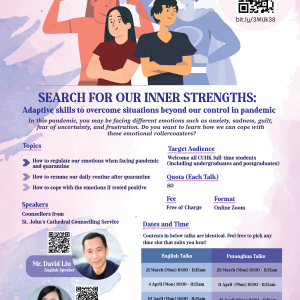Elements of non-verbal communication
Interpersonal communication is not just limited to verbal communication. Apart from the verbal content of speech, other non-verbal components such as the tone and volume of our voice, body language, grooming, physical distance between the conversing parties, etc. are also important media through which we express ourselves.
Tone & Volume
It is desirable to speak at a moderate pace and volume in normal daily conversations.
- Pace: Speaking too quickly or slowly, might make it difficult for the listeners to process our message.
- Volume: We might sound insolent if we speak too loudly. On the other hand, speaking too softly may make us sound unsure of ourselves or hinder us from getting our message across.
- Tone: Good intonation can enhance voice quality and capture people’s attention.

Body Language
This includes our facial expression, eye contact, posture and gesture.
- Congruent facial expression: Congruence between our facial expression and the content of our message is important as others may question our sincerity and genuineness if there is an incongruence.
- Eye Contact: Maintaining appropriate eye contact suggests respect and attentiveness while avoiding eye contact might suggest shyness, nervousness, or secrecy. Prolonged eye contact, on the other hand, can be threatening and may lead to uneasiness. Alternatively, we can direct our gaze to various parts of the other person’s face, such as his or her mouth, nose, forehead, etc.
- Posture: Attend to our posture from time to time regardless of whether we are sitting or standing. Keeping our arms crossed might suggest nervousness or detaching from the conversation while spontaneous hand movement and a slightly forward leaning posture can convey our interest in the conversation.
- Gestures: Supplement our speech with appropriate body language and gestures but avoid distracting our audience with too many movements.

Grooming
- Our grooming, hairstyle and attire will directly affect the kind of impression we leave on others.
- Our fashion styles can also reveal a lot about ourselves, including our personalities, attitudes and preferences.
- It is therefore advisable to pay special attention to these aspects and to dress appropriately for different occasions.
Interpersonal Space
- Interpersonal space is an important aspect in communication which varies considerably across different cultures and nature of the relationships.
- We may feel a sense of uneasiness and distress when our personal space is being invaded.
- We should keep suitable distances in our daily encounters with others.
- It is therefore important to be watchful of others’ body language and their comfort level so as to adjust our interpersonal space accordingly.

Characteristics of non-verbal communication
- Whether we speak or not, our non-verbal behaviour always carries some meaning.
- Non-verbal communication is more effective in reflecting our inner feelings and emotions. As a result, people tend to put more weight on non-verbal cues when there are incongruities between the verbal and nonverbal messages.
- Non-verbal communication can be quite idiosyncratic and requires in-depth observation before true comprehension. It is important to clarify the underlying meaning when doubts arise to avoid miscommunication and misunderstanding.
- Each culture has its own unique way of communicating nonverbally. It is essential to be open-minded and to try to understand, respect and appreciate cross-cultural differences in this regard.
Reference
Jacob, H., Kreifelts, B., Brück, C., Nizielski, S., Schütz, A., & Wildgruber, D. (2013). Nonverbal signals speak up: Association between perceptual nonverbal dominance and emotional intelligence. Cognition & Emotion, 27(5), 783–799.https://doi.org/10.1080/02699931.2012.739999






